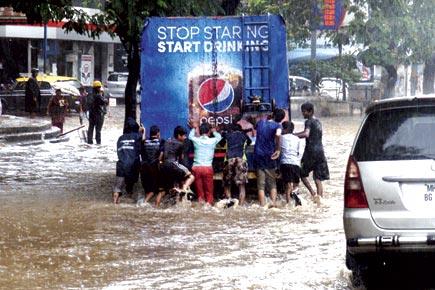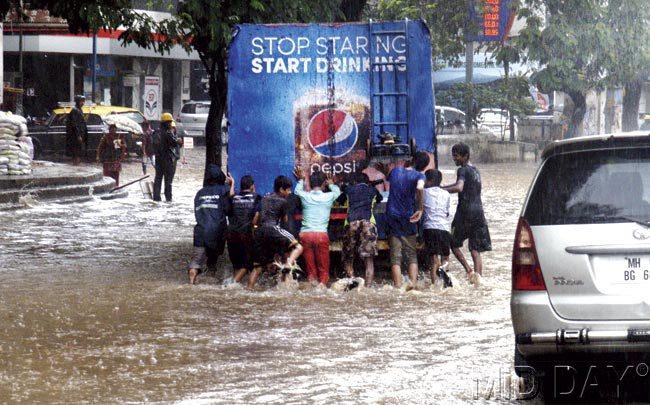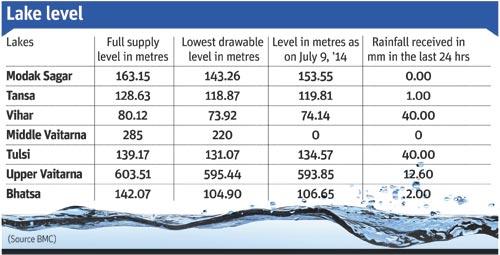Lakes are emptying, there’s a water cut in place, and now the Rs 15,000-crore Pinjal dam project will be delayed by another two years and not be ready before 2022

With the lake levels dropping rapidly and a 20% water cut in force, the last thing Mumbaikars wanted to hear is that the BMC’s much-touted Pinjal Dam, which will boost the city’s water supply, will not be ready on time.
ADVERTISEMENT

While low-lying areas in the city were flooded yesterday, as this photo from Parel aptly demonstrates, the catchment areas have been largely dry. Pic/Sayed Sameer Abedi
A senior BMC official, speaking on condition of anonymity, told mid-day that the dam, which was supposed to be ready by 2020, will be delayed by at least two years because of funding and clearance issues.
The Pinjal Dam, which is supposed to come up in Thane district, is expected to supply 1,000 million litres of water to the city every day after being connected to the Damanganga project. The plan envisages the diversion of surplus water available at the Bhugad and Khargi hill reservoirs in Damanganga basin to Pinjal dam across the river Pinjal in Vaitarna basin.
The total supply from the Pinjal dam, said a BMC official, would be 1,523 million litres per day, out of which nearly 500 million litres would be used for irrigation in the areas surrounding the dam. To divert the water from the reservoirs to Pinjal dam and then bring it up to Bhandup for supply to the city, a 65-km tunnel will need to be dug. More than 700 people will also be displaced by the project.

The total cost of the project, including this tunnel, is nearly Rs 15,000 crore and, unable to gather the funds on its own, the BMC is now mulling approaching the Urban Development (UD) ministry at the Centre for help. Additional Municipal Commissioner Rajeev Jalota, who is in charge of water supply in the city, said, “The Pinjal project plans are in process and it will take time to get all the clearances.
The project is going to cost a lot and we will be writing to the UD ministry to get the central government to fund 50 per cent of the Rs 15,000 crore needed for the project as the city needs more resources to get adequate water supply.”
Meanwhile...
Although the city has been receiving rain, the catchment areas have been largely dry, leading to the water stock in the lakes dwindling rapidly. Even the newly constructed Middle Vaitarna has not proved beneficial for the city as the lake level has stood at 0 metres (which indicates there is no water stock or useful content in the lake) for a long time.
Struggling to provide enough water to the city, the BMC is planning to tackle the problem of wastage and leakage, which, according sources say will take at least five years.
“The long-term plans to curb water shortage in the city will take at least five years to fall into place. We have to first take care of the wastage and leakage problems, for which we will need to involve various trusts and NGOs. It will be a very long process and, hence, we have to curtail the supply so that there is less consumption,” said a senior BMC officials.
 Subscribe today by clicking the link and stay updated with the latest news!" Click here!
Subscribe today by clicking the link and stay updated with the latest news!" Click here!






